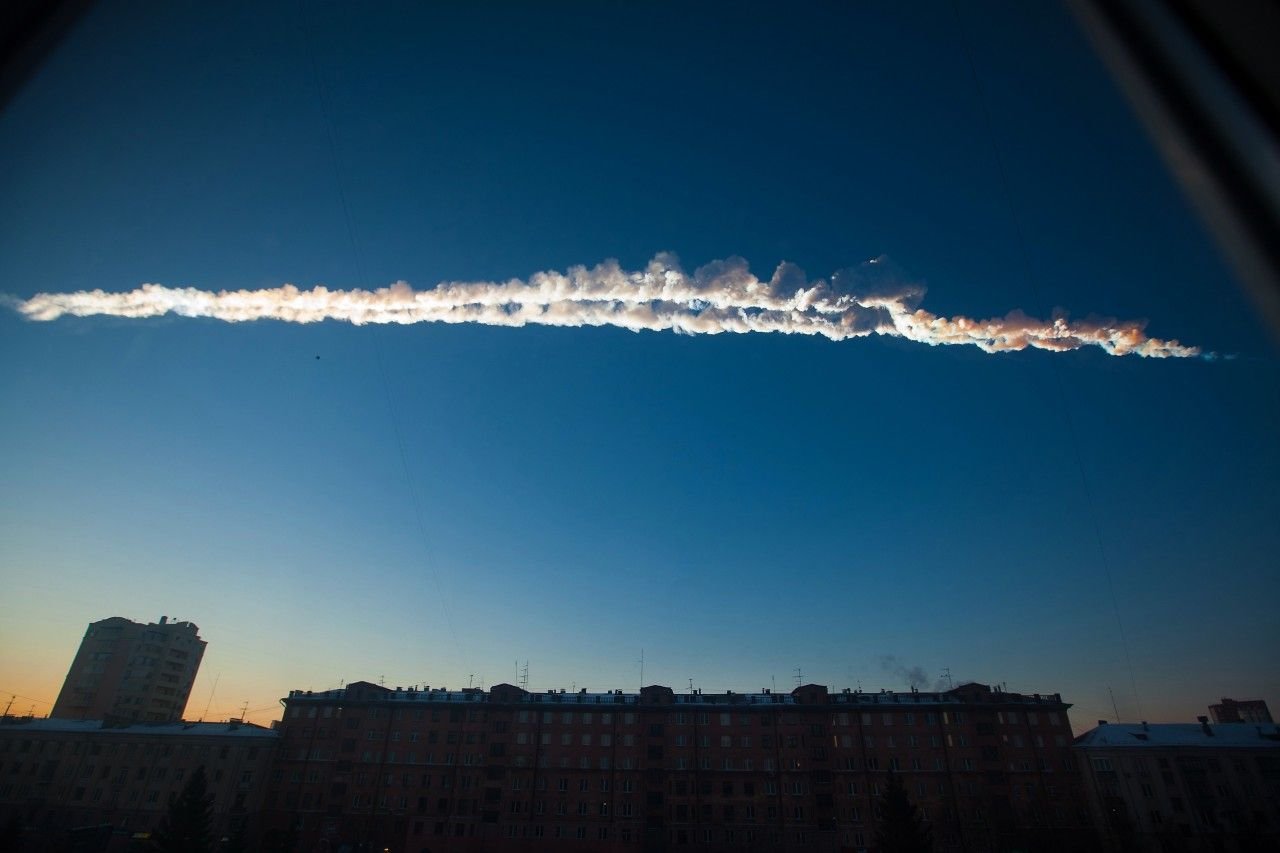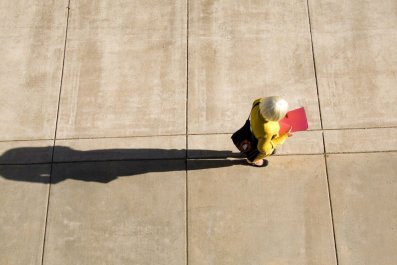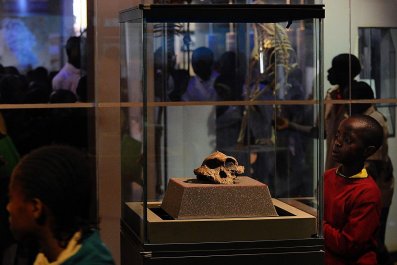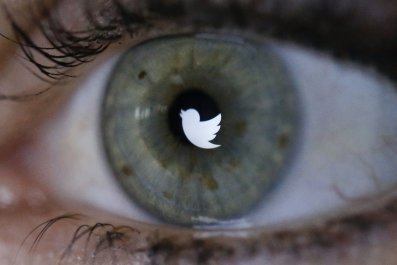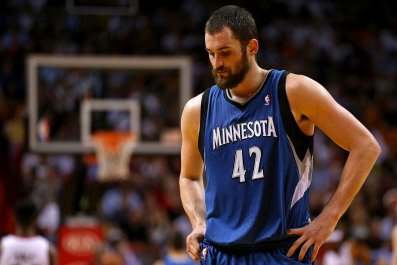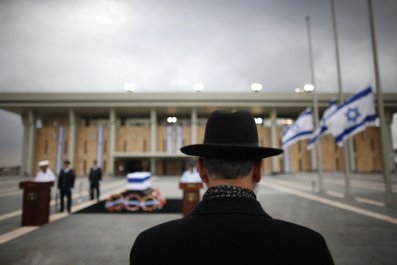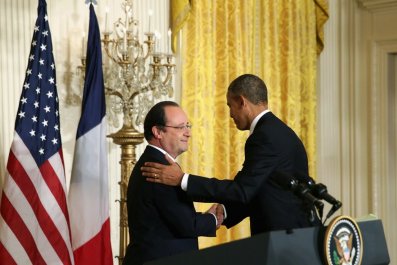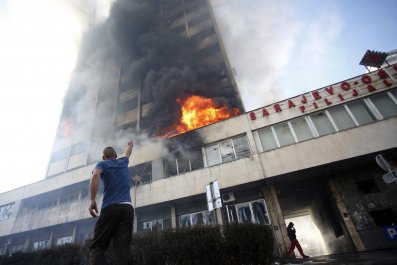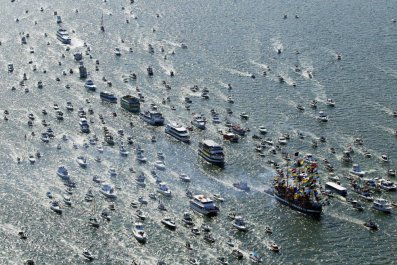In 1990, a NASA scientist named David Morrison wanted to know his chances of being killed by an asteroid.
It seemed a bit paranoid. After all, no one had ever been killed that way, and there was only one documented meteorite injury. In 1954, an Alabama woman was sitting in her living room when an asteroid crashed through the ceiling, bounced off the radio and bruised her leg.
But just because it hadn't happened didn't mean it was impossible, and when Morrison and a colleague ran the numbers, considering both the chances of an asteroid collision and the potential damage, the results were disturbing. Though it seems counterintuitive, over a 50-year period, space rocks are about three times more likely to cause someone's death than an airplane crash and eight times more likely than a tornado.
Why? Because even though tornadoes occur fairly regularly, they kill fewer than 100 people every year. But if an asteroid the size of a 40-story building were to hit New York City - an unlikely, but not impossible, occurrence - two things would happen. Everyone would see a blinding flash, and seconds later millions of people would be dead.
Recently the legitimacy of this threat has gone mainstream. Before, people dismissed Morrison as a crank. But now, even members of Congress are asking NASA whether we're prepared. At a hearing in March, Congress grilled NASA Administrator Charles F. Bolden Jr. and two other officials about "threats from space." Representative Bill Posey, R-Fla., asked "What would we do" if a big rock was going to hit New York in three weeks? The panel looked at each other and said nothing. "Bend over and what?" Posey said.
After a pause, Bolden assured the panel that "these are very rare events" and that NASA isn't aware of any big rocks headed our way, but "if it's coming in three weeks, pray." No one laughed.
It may seem extraordinary that astronomers are so mystified, especially considering how much they do know about asteroids: that they are hunks of ice and metal drifting around the sun, that they come in all shapes and sizes, and that most of them cluster in an orbit between Mars and Jupiter called the asteroid belt. But the asteroids aren't confined to the belt - millions are spinning in orbits that overlap Earth's. Scientists call these "near-Earth asteroids," and our paths frequently cross. The small ones flare as harmless shooting stars. The biggest ones are thought to have caused mass extinctions.
This is how clueless even the world's best scientists are: Of the million or so asteroids that could wipe out a city, astronomers have discovered fewer than 1 percent, says Morrison, now 73 years old and a senior scientist at NASA. "Some of these are as dark as a lump of coal," he told Newsweek. Telescopes on the ground can't see them, and the only satellite telescope looking for them was dormant until just recently. These "city killers" tend to strike about once per century.
This last happened in 1908, when an asteroid tore through the atmosphere and burst several miles above a remote part of Siberia. Estimates suggest the asteroid was bigger than 200 feet across, but it flattened an area of forest larger than Los Angeles and Chicago combined. By comparison, the meteorite that landed near Cancún and (probably) killed the dinosaurs was six miles wide.
Even so, it wasn't until the early 1990s that NASA started searching for near-Earth asteroids. The first program began in earnest around 1994 when mile-wide comet fragments slammed into Jupiter, with one collision creating a five-mile fireball hotter than the sun. It was the first major impact humans had ever observed, and it got Congress's attention. Alarmed legislators responded by funding Spaceguard, a slow, ongoing effort to predict similar disasters on Earth. As of early this month, scientists had logged 10,599 near-Earth objects. (That includes comets, which are icier than asteroids, exist a light-year away and only swing by occasionally.)
On February 15, 2013, the largest asteroid to hit Earth since 1908 occurred over Chelyabinsk, an industrial city in Russia about 150 kilometers from the Afghanistan border. A 60-foot rock flew through the atmosphere at nearly 42,000 mph, and the heat of the friction created in the process blew it up like a nuclear bomb. A massive fireball and subsequent shockwave wobbled buildings and injured more than 1,000 people. No one saw it coming; NASA scientists on the asteroid project told 60 Minutes they learned about it on Twitter.
Posey says he was a proponent of planetary defense back when that was considered "kooky." At the age of 9, his father took him to see the Barringer Crater outside Flagstaff, Ariz., which was formed 50,000 years ago by a 150-foot asteroid. "What's to stop this from happening again?" he wondered.
Now 66, Posey says he still thinks the answer is "nothing." Speaking to Newsweek from his home in Melbourne, Fla., he said that having a plan is "important for national security and the survival of our species. I mean, it's going to happen again."
As for the survival of our species, we don't have to worry about that any time soon. Of the 1,000 near-Earth asteroids big enough to destroy civilization, 90 percent have been discovered. Impacts with these massive rocks are exceedingly rare, and none pose a threat in the foreseeable future.
Several international efforts to deflect an asteroid are under way, and the United Nations in October established plans for an International Asteroid Warning Network, a sort of planetary defense plan. Scientists are confident that if an asteroid (or, less likely, a comet) were headed our way, they could divert it by ramming it with a bomb or using a gravity tractor, a spacecraft of sufficient mass to tug an asteroid slightly toward it. With several years of warning, a minuscule diversion would swing it thousands of miles off course.
But without that warning time, evacuation would be the only option. In 2003, Clark Chapman, of the Southwest Research Institute, published a paper called "How a Near-Earth Object Impact Might Affect Society." In it, Chapman showed the probability of different size rocks hitting Earth this century (one-in-a-million for a 10-kilometer asteroid; 40 percent for a 30-meter asteroid). Then he outlined the kind of wreckage each might cause.
For a 50-meter rock, "fires might well be ignited beneath the brilliant explosion, unless it were cloudy," he wrote. "Weak structures might be damaged or even destroyed within a 20-kilometer radius by the shock wave and subsequent hurricane-force wind gusts. Exposed people and animals could be struck by flying objects."
NASA's best solution to find these rocks, an infrared-telescope satellite called NEOCam, is on a backburner, basically unfunded. And even if NASA had more money, the White House is much more interested in going to Mars. As for the U.N.'s International Asteroid Warning Network, it acts more like a curator of existing telescopes and wouldn't actually build new tools.
"Wouldn't it be ironic if we get wiped out even though we have the technology to do something about it?" says Ed Lu, chief executive officer of the B612 Foundation, an organization led by retired astronauts devoted to saving the planet. Lu says the issue first struck him as he drifted through space for six months on the International Space Station, "sitting in there and looking at the craters on the moon."
"We just felt we had to do it ourselves because very clearly no one else is doing it," Lu told Newsweek. The plan is to launch a privately funded telescope satellite called Sentinel that will find asteroids more rapidly than NASA can. Like the proposed NEOCam, its infrared telescope would reveal dark objects, and its view wouldn't be blurred by the atmosphere. The project will cost about $400 million - not much considering NASA received about $16.9 billion in funding in 2013.
After its scheduled launch in 2018, Lu says his team will chart at least 100,000 asteroids per year, including the few hundred yet undiscovered civilization destroyers. "Sentinel is going to find something that's going to hit the Earth," Lu says. Morrison, the NASA scientist, calls Sentinel "the answer."
Until then, as Bolden, says, "Things have happened. You gotta pray."



